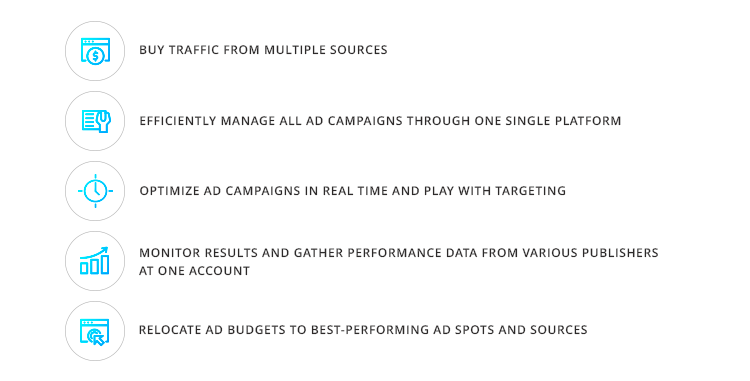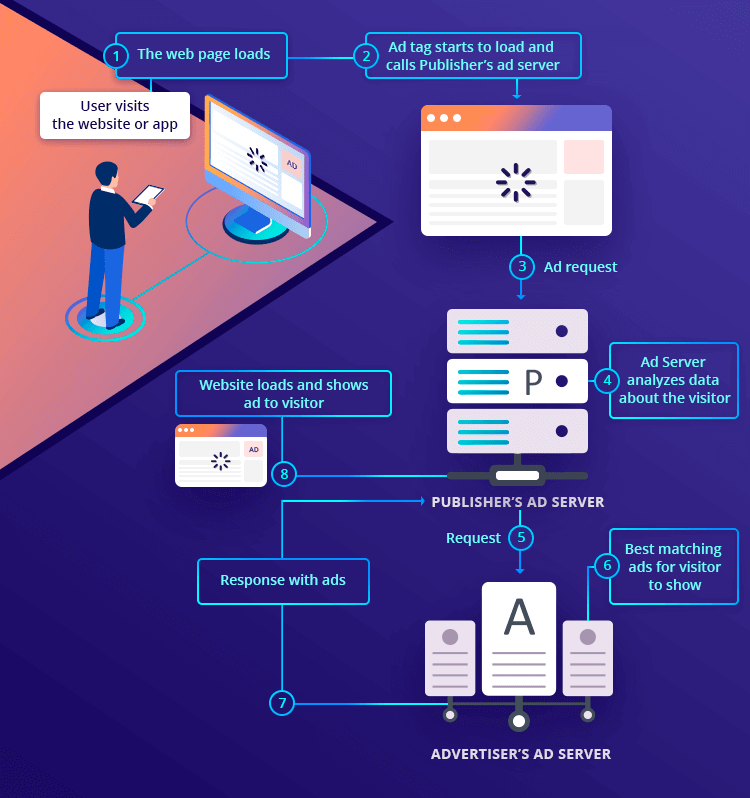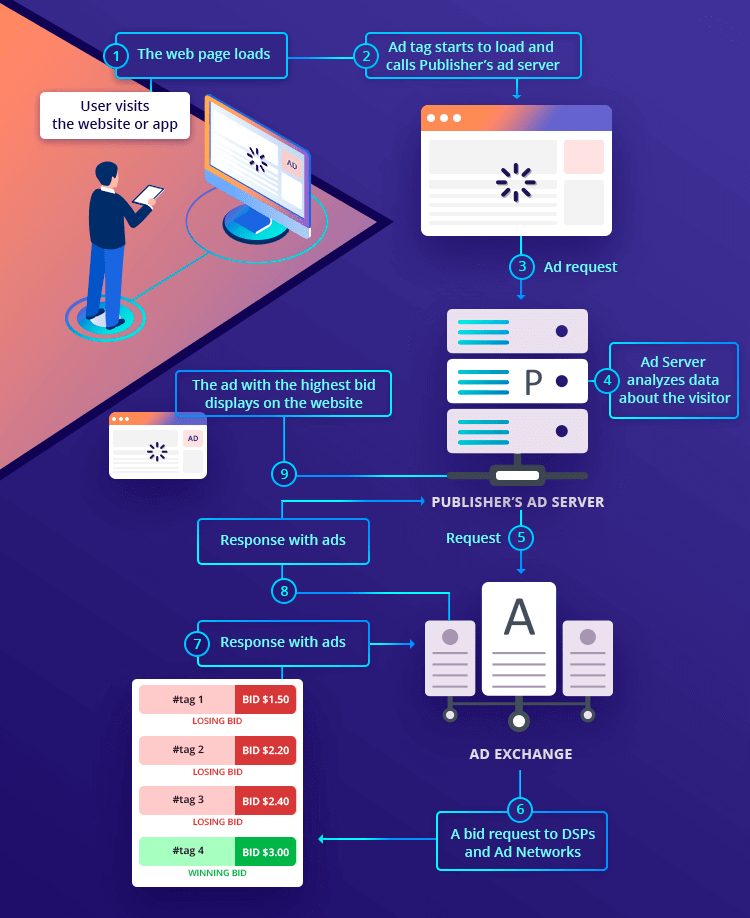What is an ad server?
A proper ad server is the core of impactful cross-channel advertising. Knowing how the ad server works makes the choice of one for your business a lot easier. Let’s take a closer look at the ad serving process from the inside.
Ad Server is a web server that hosts information about ads and ensures delivering advertising content to different digital platforms, websites and mobile apps. Along with hosting and serving ads, they allow to manage and optimize advertising activities. Long story short, they make everything work properly.
The first ad server was released in 1995 as a great innovation to the market. Twenty-three years later the plenty of powerful ad servers enable efficient, automated and cost-effective online advertising for both publishers and advertisers.
Let’s take a closer look at the ad server and figure out how to choose the best applicable ad server for your business.
Why should you use an ad server?
Publishers
Publishers need an ad server to:

The very first thing publishers need to do before launching ads on the website is to connect to an ad server. Ad server gives publisher technology for connecting to multiple advertisers at one place. For example, if publisher aims at adding 5 different demand partners, he can set up their ads on ad server and turn them into 1 code with rotating ads to be added to website layout.
What is even more important, ad server ensures you sell the impression to the right user.
Ad Server is on guard for publishers revenue. Along with various targeting options, ad servers include features like frequency capping and even pacing allowing to maximise revenue from every impression.
By controlling user’s interaction with ads, publishers get a chance to optimize ad placements and run the best-performing ads on different spots.
Advertisers & media buyers
The purposes of using ad servers for advertisers are quite similar to publishers goals. Advertisers need ad servers to:

The more powerful ad servers’ functionality is, the more granular analytics reports will be generated.
Ad Networks
Ad networks must use an ad server to:

Advanced real-time analytics is essential for creating successful ad network.
In a nutshell, with a cutting-edge ad serving technology ad network might be boosted to a far greater extent than with an ad server providing standard features only. The ad server defines what type of ad network you will be able to build.
Epom team developed an Ad Server specifically for ad networks. Robust ad serving and managing solutions aside, Epom Ad Server provides companies with a customizable white label solution. That means that with Epom Ad Server ad network gets a chance to enhance the brand with a tailored ad serving solution and request the development of specific custom features
The ad serving process
Ad serving is a key technology and service allowing to place ads on the websites.
Usually, it depends on the functionality of the ad server, whether the ad server user is a publisher or advertiser and other things.
Let’s look at classic ad serving cases and get an overall idea of how everything works.

There could be one more link between publisher and advertiser like ad exchange. So let’s go through another case with a programmatic scenario.

The ad serving process seems to be complicated at a glance, but in fact, it lasts no longer than a second.
How to choose proper ad server for your business
Before the active search of the most appropriate ad server enlist the main business goals of your advertising company. What capabilities should the ad server provide you with to reach your goals?
Prior to looking for the right ad server for your business, make sure you’ve clearly defined the ad serving features you need.
For example, you are creating a video ad network. You’ll have to find an ad server compliant with video ad activities. This ad server should support running VAST or VPAID tags, tracking a whole bunch of specific metrics and insure video ads waterfall.
Or let’s assume you are willing to experiment with XML advertising. Unfortunately, you won’t be able to get by without an XML functionality allowing to pass the right parameters from publishers to advertisers. In this case you will have to look for an ad server that sustains XML advertising.
Compare ad servers in terms of the cost. Most often, the ad servers follow the policy: the more traffic you run through the ad server, the less you pay for every impression.
In addition to cost-effectiveness, ad server should be simple to use. No doubt, the ad server functionality can’t be easy to understand at a glance, but intuitive interface and hassle-free setting up process would definitely make advertising more efficient and enjoyable.
Key features your ad server should support
Think over the key features your ad server should have. Choose 3 ad servers compliant with your advertising goals and schedule a demo call with their teams. During the demo, you’ll have a chance to look inside the ad server.
Video demo calls are very important, especially considering the fact you will have to work with this functionality daily. It is better to be aware of how your everyday work with a specific ad server will look like.
Some ad servers provide users with a free trial for getting used to the technology. For example, Epom Ad Server gives 14-day free trial. That’s enough time to understand whether the proper ad server is able to cover all your requirements. As an option, DoubleClick for Publishers doesn’t charge publishers with volumes less than 90 millions of ad impressions monthly.
Apart from the specific features, ad server should make bunch of standard properties available.
Here is a list of basic setup capabilities the ad server should cover:

Add powerful real-time analytics to the list of must-features. Without granular and timely reports you won’t have a full control over ad performance and make data-driven decisions.
Some ad servers offer behavioural targeting and retargeting which are also a huge advantage for ad server users.
All in all, ad servers ensure online advertising for both publishers and advertisers. The choice of the right ad server for your company and understanding of ad serving process will surely help you to effectively manage ad activities and keep your revenue stream growing.